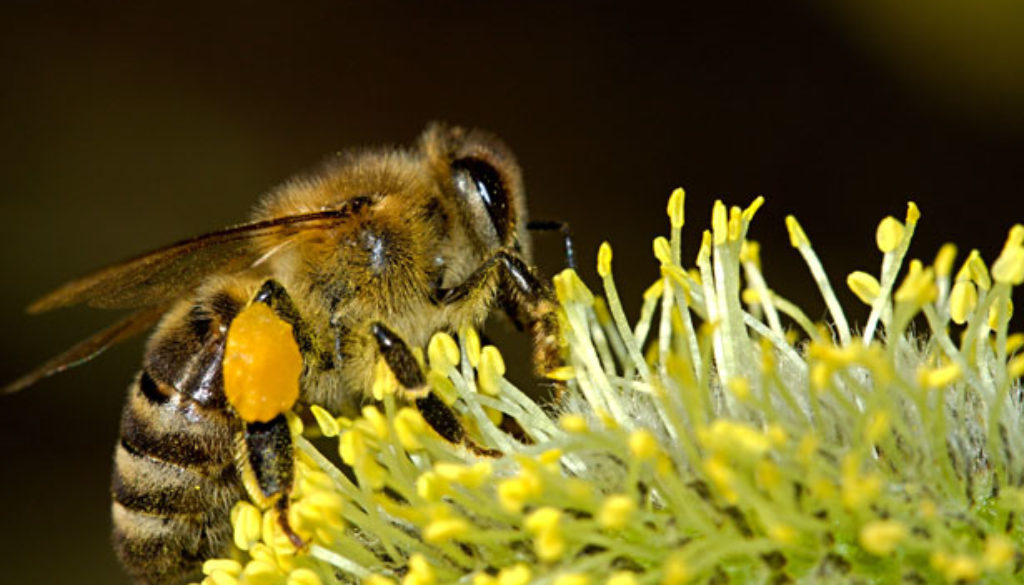EPA Finds Neonics Are Risky Business — But Plans to Approve Anyway
By Lucas Rhoads, Natural Resources Defense Council
After a lengthy and long-delayed review of neonicotinoid insecticides, or neonics, the U.S. Environmental Protection Agency released its findings this week, acknowledging that it had previously underestimated the serious risks these highly insect-toxic pesticides pose not only to bees but also to aquatic ecosystems, birds, other wildlife, and even human health.
Unfortunately, protective measures proposed by the EPA fall far short of the desperately needed actions taken by its sister environmental agencies in Europe and Canada and supported by the overwhelming weight of independent scientific evidence. The agency has greenlighted continued widespread use of the pesticides on a huge variety of crops, lawns, homes, gardens, and just about any other place you can imagine—all across the country—even as other countries move to ban most outdoor uses.

Source: USGS
As a new NRDC report shows, the EPA’s plan isn’t just bad news for bees and the enormous number of crops that depend on them for pollination; it’s also bad for whole ecosystems—birds, bats, fish, deer, other aquatic life, and, quite possibly, people. The decision isn’t final yet—the public has 60 days to weigh in—and NRDC will be pushing the EPA every step of the way to make sure the agency does its job right.
A Critical Chance to Correct Course—With the EPA Still Pointed in the Wrong Direction
Under federal law, the EPA is required to review all registered pesticides every 15 years to make sure they don’t unreasonably harm the environment or risk public health. For about a decade, the agency has been reviewing the five registered neonic pesticides under this process. Although many of the risks brought upon by neonics were unknown when the EPA first approved the chemicals, we now know that they are a leading cause of bee declines, a grave threat to aquatic ecosystems, and a possible threat to human health.
The EPA should respond to this with real protections for pollinators and other wildlife, such as banning or heavily restricting dangerous neonic uses. Today’s decisions, however, show that instead of taking the opportunity to correct course on neonics, the agency is unwilling to take the actions needed to protect our environment—and ourselves—from neonics. If the agency doesn’t correct course now, there is no scheduled plan to revisit the issue for another 15 years.
Failing to Respond to the Science
The EPA’s decision to continue allowing widespread neonic use simply doesn’t add up. Comprehensive worldwide assessments, independent literature reviews, and even industry-funded field studies established years ago the dire threats neonics pose to pollinator populations. In fact, the EPA’s own pollinator assessments confirm many of these risks.
Increasingly, science is showing that the impacts of neonics are not just a bee issue but also a major player in the broader biodiversity crisis. Neonics are highly ecologically toxic, persistent, and all over the environment. The popular pesticides have been linked to harms to native pollinators and insects, fish, birds, deer, bats, aquatic ecosystems, and other wildlife, as well as widespread soil and water contamination. The EPA’s own risk assessments also recognize that neonics contaminate our nation’s rivers, lakes, and wetlands at levels harmful to aquatic ecosystems. But the decision does little to address these risks.
Moreover, the EPA’s decisions acknowledge that people, not just wildlife, have more to fear from neonics than once thought. The agency even proposes several measures to address unsafe uses of these pesticides. But had the EPA applied the appropriate safety factors as required by law to protect children and pregnant women, it would have identified many more uses of brain-toxic neonic products that are unsafe.
The EPA also disregards or downplays non-industry science that links neonic exposure with neurological and developmental harm in wildlife and people. These findings are consistent with industry laboratory studies showing that neonics are especially harmful to brain development. Human health experts have also raised red flags regarding their potential to harm people.
The agency’s report also ignores independent research showing that neonics could break down into other, potentially more toxic chemicals in the environment, including waterways and other habitat that is critical to wildlife, including endangered species.
The EPA’s proposal amounts to shuffling deck chairs on the Titanic. Continued widespread use of these highly toxic insecticides is already being blamed for harm to aquatic species, pollinators including honeybees and wild bees, and other wildlife. The EPA has offered up a teaspoon of regulations against a tempest of harm.
Time to Make Your Voice Heard
As mentioned, this isn’t over yet. Today’s proposals will kick off a 60-day public comment period once they are officially published in the Federal Register. Anyone who cares about bees, birds, butterflies, aquatic life, or their own health should tell the agency to take stronger protective actions against rampant neonic use now.
The EPA needs to hear your voice. Our bees, birds, ecosystems, clean water, and health depend on it. Stayed tuned for further instructions on how to comment once the comment period officially starts.

